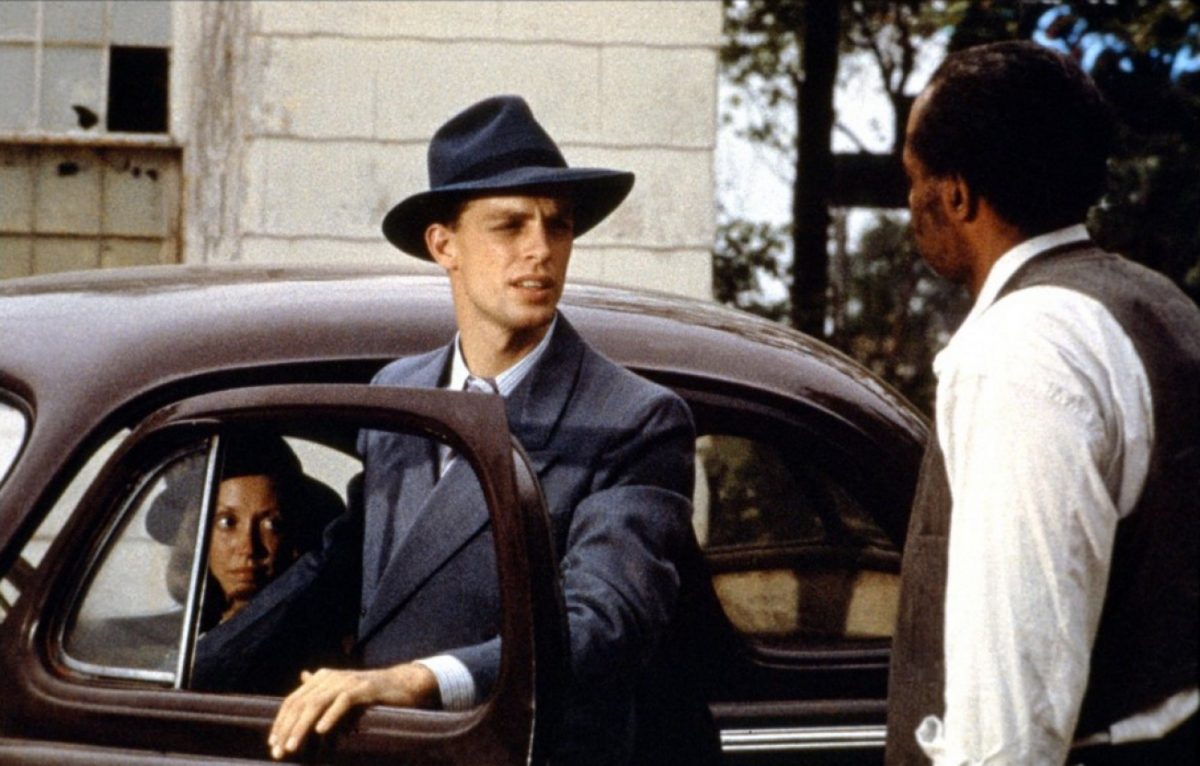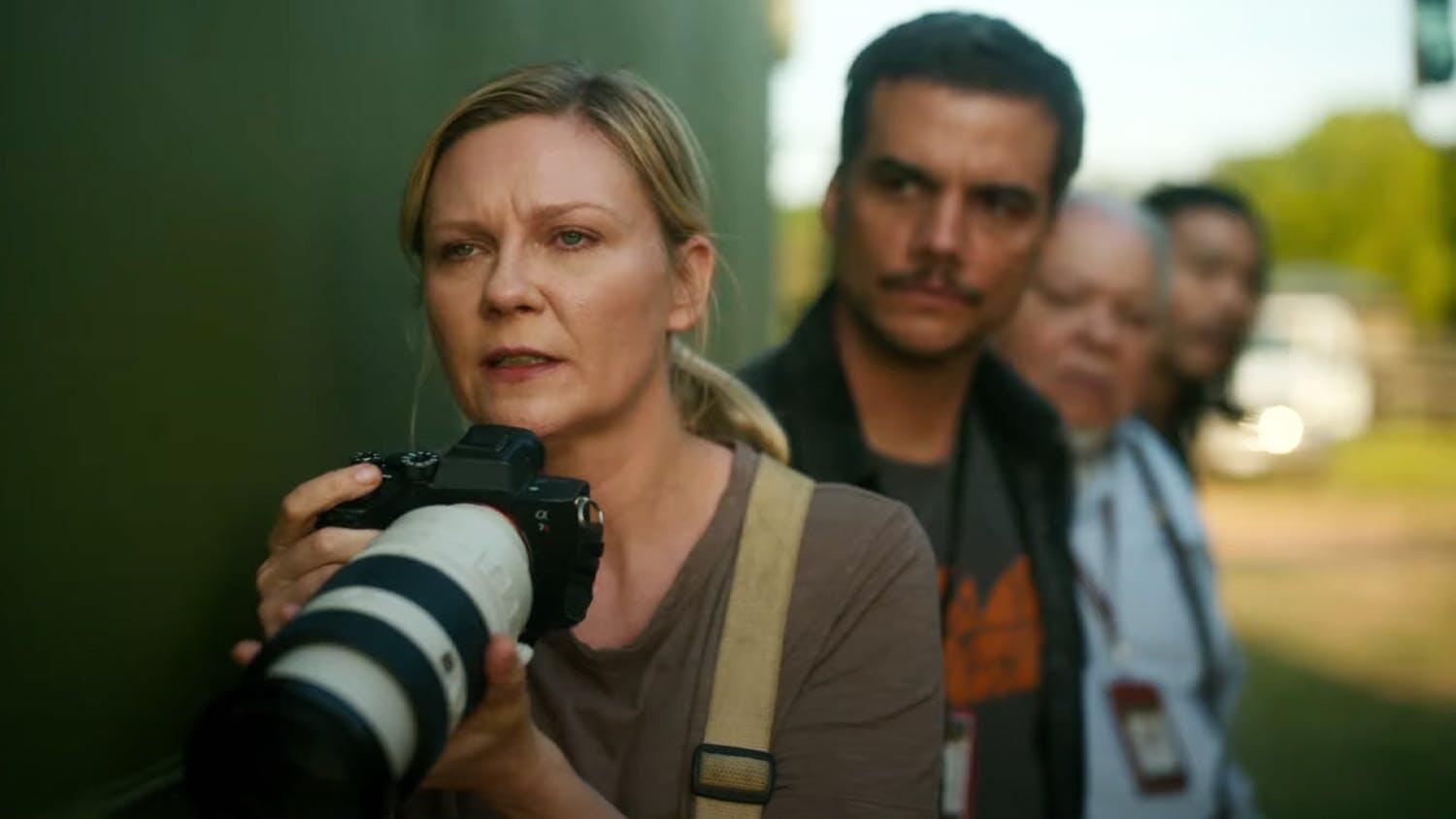Love and Coca-Cola
by Pauline Kael
In McCabe & Mrs. Miller, a rangy, buck-toothed young boy discovered undreamed-of pleasures at a snowbound brothel and met a scrawny, scared girl, a widowed bride who had just turned whore. She had teeth and a grin to match his own, and when he left they said goodbye, like the affectionate innocents they were, and he called out that he’d be back the next year. A minute later, still harmlessly affable, he was shot down from a bridge, and his body slowly crushed the ice before disappearing in the water. Robert Altman has reunited the pair, Keith Carradine and Shelley Duvall, in Thieves Like Us; he’s Bowie, one of three escaped convicts, and she is Keechie, whose drunken father runs the gas station the convicts hide in. Bowie has been in prison for seven years, since he took part in a holdup when he was sixteen; Keechie has never had a boyfriend — not even one to walk her to church. They fall in love; it’s two-sided, equal, and perfect — the sort of romantic love that people in movies don’t fall into anymore. Keith Carradine takes the screen the way a star does, by talent and by natural right. In his bit role in McCabe, he made the audience yield to him so completely that his sequence almost threw the movie out of whack; he makes us yield here for the entire film. He has the rawboned, open-faced look of a young Henry Fonda or Gary Cooper; he’s a beautiful camera subject, and the rawness saves him from the too-handsome-juvenile look of earlier stars. There has never been an ingenue like Shelley Duvall, with her matter-of-fact manner and her asymmetrical, rag-doll face; if it weren’t for her goofy, self-conscious smile, she could be the child of Grant Wood’s “American Gothic” parents. Her Keechie carries candor to the point of eccentricity; she’s so natural that she seems bizarrely original. Whatever it was that Altman saw in her when he put the twenty-year-old Houston girl, who had never acted professionally, into Brewster McCloud didn’t quite come through that time, but it certainly peeped out in her small role in McCabe, and here she melts indifference. You’re unable to repress your response; you go right to her in delight, saying “I’m yours.” She looks like no one else and she acts like no one else. Shelley Duvall may not be an actress, exactly, but she seems able to be herself on the screen in a way that nobody has ever been before. She doesn’t appear to project — she’s just there. Yet you feel as if you read her every thought; she convinces you that she has no veils and nothing hidden. Her charm appears to be totally without affectation. Altman must have sensed in that inexperienced twenty-year-old girl some of the same qualities that separate him from other directors: a gambler’s euphoria about playing the game his own way, assurance without a trace of imitativeness.
In other Altman films, there is always something that people can complain about; they ask, “What’s that there for?” In Thieves Like Us, there’s nothing to stumble over. It’s a serenely simple film — contained and complete. You feel elated by the chasteness of the technique, and the film engages your senses and stays with you, like a single vision. It’s beautiful right from the first, pearly-green long shot. Robert Altman finds a sureness of tone and never loses it; Thieves Like Us has the pensive, delicate romanticism of McCabe, but it isn’t hesitant or precarious. It isn’t a heady, whirling sideshow of a movie, like The Long Goodbye; it has perfect clarity. I wouldn’t say that I respond to it more than to McCabe or that I enjoy it more than the loony The Long Goodbye, but Thieves Like Us seems to achieve beauty without artifice. It’s the closest to flawless of Altman’s films — a masterpiece.
Altman breaks the pattern of what American directors are commonly supposed to be good at; this picture has the relaxed awareness that we honor Europeans for and that still mystifies Hollywood. Like Mean Streets, it didn’t cost enough for Hollywood people to understand it. Thieves Like Us is based on a neglected, long-out-of-print 1937 novel by Edward Anderson — the novel that Nicholas Ray’s 1948 picture They Live by Night was derived from. (Edward Anderson won a literary prize with his first novel, Hungry Men, in 1935, and then, as far as I can determine, published Thieves Like Us and disappeared from the writing world. It is said that he was living in Texas when They Live by Night was made, but the novel, according to Avon Books, which is putting out a new edition, is in the public domain, and the publishers have had no contact with the author.*) The Ray film, produced by John Houseman and starring Cathy O’Donnell and Farley Granger as Bonnie-and-Clyde figures, retained Anderson’s plot but strayed far from the book’s tone; the Altman film stays very close to that tone, while moving the action from Oklahoma and Texas to Mississippi. The picture was shot in sequence in forty-three days, at a cost of $ 1,250,000. Altman didn’t build thirties sets; he found the vegetating old towns that he needed. He took his crew to Mississippi and made the picture in the sort of freedom that Jean Renoir had when, as a young man, he took his family and friends out to make A Day in the Country. Before Altman was hired to direct, the producer, Jerry Bick, had commissioned a script by Calder Willingham. Although Willingham gets a screen credit, his script didn’t have the approach Altman wanted, and Altman’s former script girl, Joan Tewkesbury, then devised another script, in collaboration with the director, which stays on Edward Anderson’s narrative line, retaining much of his dialogue. (He was a considerable writer.) The movie has the ambience of a novel; it is the most literary of all Altman’s films, yet the most freely intuitive. Thieves Like Us is so sensuous and lucid that it is as if William Faulkner and the young Jean Renoir had collaborated.
Robert Altman spoils other directors’ films for me; Hollywood’s paste-up, slammed-together jobs come off a faulty conveyor belt and are half chewed up in the process. I think I know where just about all the elements come from in most American movies (and in most foreign movies, too), and how the mechanisms work, but I don’t understand how Robert Altman gets his effects, any more than I understand how Renoir did (or, for that matter, how Godard did from Breathless through Weekend, or how Bertolucci does). When an artist works right on the edge of his unconscious, like Altman, not asking himself why he’s doing what he’s doing but trusting to instinct (which in Altman’s case is the same as taste), a movie is a special kind of gamble. If Altman fails, his picture won’t have the usual mechanical story elements to carry it, or the impersonal excitement of a standard film. And if he succeeds aesthetically, audiences still may not respond, because the light, prodigal way in which he succeeds is alien to them. Three-quarters of a century of slick movies have conditioned audiences’ expectations. But Thieves Like Us might win him the audience that was put off by the elliptical poetry of McCabe & Mrs. Miller and the offhand pyrotechnics of The Long Goodbye. There’s no predicting what he’ll do next; Thieves Like Us, with its soft, unassuming grace, may be the only fully accessible movie he’ll ever make. Its vision is just as singular as that of his other films, but the masterly above-board method could put him in touch with a popular audience; Griffith used to reach that audience (less corrupted then, of course) with comparable pastoral romances, such as True Heart Susie. Thieves Like Us is not just the easiest-to-like picture Altman has ever made — I think one would have to fight hard to resist it.
The scope is small, but Thieves Like Us is a native work in the same way that The Godfather is; we know the genre (Depression, bank robbers, Bonnie and Clyde), and the characters are as archetypal as one’s next- door neighbors. Altman didn’t have his usual cinematographer and production designer with him this time; working with Jean Boffety, a French cinematographer who had never done a picture in this country, and with a newcomer, Jackson De Govia, as production designer, he seems to have changed his style of improvisation — to have become calmer, more fluid. Everything in the Anderson book is refined in the movie, instead of what usually happens to novels — the coarsening that results from trying to make things fit a preordained plan, and settling for the approximate. The milky, semi-transparent cinematography makes the story seem newborn. Altman uses the novel as his base, but he finds his story through the actors, and, as Renoir did, through accidents of weather and discoveries along the way. He finds spontaneous comedy; the novel isn’t funny, but the movie is. The lovers are far less conventional in the movie than in the book. (With Shelley Duvall, you couldn’t be conventional even if you wanted to.) Bowie isn’t a psychopath or a crazed dreamer, like his two robber friends; he’s still a kid, and his essential healthiness becomes the core of the picture. He wants what Keechie represents, but he’s caught, living a life that doesn’t make sense to him. When he says to a wandering dog “Do you belong to someone, or are you a thief like me?” we know that for him “thief’ means “stray.” Identifying with Bowie, we react to each eruption of violence as he does — with a moral chill. Anderson, too, had basically seen him as gentle and straight, but the picture takes its cue from the rapport of Carradine and Duvall, omitting other elements in his character and moving away from the links to Bonnie and Clyde.
At first, the two convicts who escape with Bowie — T-Dub and Chicamaw — sit around giggling, high on freedom, but then their characters start to take shape. Bert Remsen, who had given up acting, was working as casting director on Brewster McCloud when Altman put him into the picture; he appeared again, memorably, in McCabe, and now he’s T-Dub, a veteran bank robber. T-Dub is a cheery, likable fool who becomes flushed with success and gets reckless; Remsen plays the role so warmly that T-Dub’s careless idiocy is fully believable. John Schuck, who was Painless in M*A*S*H, has also turned up in two other Altman films, but there was nothing in his earlier work to prepare one for his major performance here, in the pivotal role of the heavy-drinking, half-mad Chicamaw. Schuck has always had a suggestion of a bulldog in his face, and now, grown corpulent and more powerful-looking, he gives a performance that in some scenes rivals the intensity that Bogart brought to his Fred C. Dobbs in The Treasure of Sierra Madre. Schuck’s comic, terrifying big scene, when he insists on play-acting a robbery at home with small children and explodes in a murderous rage when they lose interest, and his last scene, in which he’s deserted, yelling in torment on a country road, are classic moments. Altman often picks up part of his cast on location, or puts members of the crew to work; the writer Joan Tewkesbury turns up here as the woman in the train-station sequence. Louise Fletcher, who is Mattie, T-Dub’s sister-in-law, had been a TV actress in the early sixties and had retired, but she is married to the film’s producer and was on location in Mississippi. Altman asked her to play the small part of Mattie, and then, when he saw the presence she brought to it, he enlarged the role. Louise Fletcher has a full, strong body and great rounded arms; her Mattie is a no-nonsense woman who looks as if she had lived through what women in soap operas prattle about. She’s a tough-broad earth mother with a coating of banal respectability — an authentic American-woman character.
You can see that Altman doesn’t have to prove to anybody that he can re-create the thirties. The movie isn’t a work of nostalgia; it’s not a glorification of the past. It’s localized in an era, and the people can be understood only in terms of that era. They are part of the age of radio, and Altman uses radio programs of the thirties for his score, and Coca-Cola for his motif. Everyone swigs Coca-Cola. Keechie is always reaching for a bottle; the old truck advertising Coca-Cola makes an appearance; and on the prison sign at the Mississippi State Penitentiary, at Parchman, there are Coca-Cola ads. I inquired, to find out if this was on the level, and was told that the crew was denied permission to film at actual prisons, where these ads are indeed on the signs, but that the reproduction is faithful. The prison at Parchman is, of course, a landmark in several Faulkner novels. For the last two years now, friends of mine have been shouting that Altman must do The Wild Palms or As I Lay Dying; they’ve been convinced that he is the man to bring Faulkner to the screen. Maybe he knew it all along, and maybe he was smart enough to know that he could do it best by using someone else’s material for his text. (Perhaps this is also how someday someone will put Fitzgerald on film.) Thieves Like Us comes closer to the vision and sensibility of Faulkner’s novels than any of the movie adaptations of them do. Altman didn’t start from Faulkner, but he wound up there. If he did a Faulkner novel, he might not be able to achieve what people want him to. But Thieves Like Us is his Faulkner novel.
*His son and people who worked with him provide the information that he was a screenwriter at M-G-M in 1941, but mostly he supported his family by one crummy newspaper job or another. He died in 1963.
New Yorker, February 4, 1974





